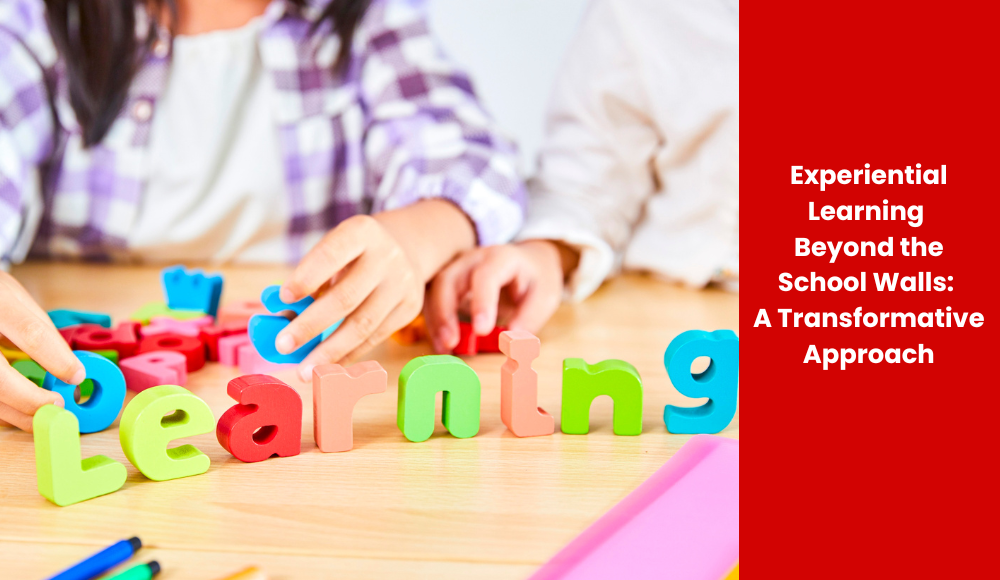Education has long been viewed as a process that happens within the walls of a classroom. However, as the world rapidly evolves, so too must the way we approach teaching and learning. One of the most transformative educational methods gaining traction today is experiential learning—learning by doing. This approach moves beyond traditional teaching, encouraging students to engage with real-world challenges and experiences, fostering deeper understanding, critical thinking, and personal growth.
What is Experiential Learning?
Experiential learning is a pedagogical method that emphasizes learning through direct experience. This method allows students to immerse themselves in activities that require them to apply knowledge, skills, and ideas in real-world scenarios. Instead of relying solely on textbook learning or theoretical knowledge, students are encouraged to interact with the world around them, exploring and reflecting on what they learn.
Experiential learning can take various forms, including internships, field trips, service-learning projects, simulations, and hands-on experiments. It blends cognitive, emotional, and physical engagement to create a more holistic learning experience.
Why is Experiential Learning Important?
In today’s dynamic world, the ability to apply knowledge, think critically, and problem-solve is more essential than ever. Traditional education models often focus on rote memorization and theoretical understanding, but they can fall short in preparing students for real-life situations.
Experiential learning, however, nurtures skills that are vital in the modern world:
-
Critical Thinking and Problem-Solving: Experiential learning challenges students to think on their feet and come up with creative solutions to complex issues. By engaging in real-world problems, students are forced to analyze situations from multiple angles, fostering critical thinking and innovative problem-solving abilities.
-
Hands-On Application of Knowledge: The true test of learning is how it can be applied outside the classroom. Experiential learning encourages students to take their academic knowledge and use it to solve practical, real-world problems. This ability to connect theory with practice enhances retention and deepens understanding.
-
Social and Emotional Growth: Experiential learning emphasizes collaboration, empathy, and personal reflection. Whether working in teams or engaging with diverse communities, students learn to communicate effectively, develop leadership qualities, and understand different perspectives, all while building emotional intelligence.
-
Preparation for Future Careers: In an increasingly competitive job market, employers are not just looking for academic knowledge—they seek individuals who can adapt, think critically, and work collaboratively. Experiential learning equips students with these crucial skills, preparing them for successful careers across various fields.
Key Forms of Experiential Learning
1. Internships and Apprenticeships: These opportunities allow students to gain practical experience in their chosen fields, learning from professionals in real work environments. Internships provide hands-on experience and help students build a professional network, while also enhancing their resumes.
2. Service-Learning: Service-learning combines academic learning with community service. Students apply classroom concepts to address real-world social issues, often working with underserved communities. This not only reinforces academic concepts but also fosters a sense of civic responsibility and empathy.
3. Field Trips and Study Tours: Field trips are a great way for students to observe and interact with the world outside the classroom. Whether it’s a visit to a museum, a historical site, or a science lab, field trips bring learning to life and deepen students’ understanding of the subjects they study.
4. Simulations and Role-Playing: In simulations, students participate in mock scenarios that mimic real-world situations. These exercises can include everything from business negotiations to crisis management, offering students the opportunity to practice decision-making in a controlled environment.
5. Hands-On Projects: Many educational institutions integrate hands-on projects where students design, build, or create something. Whether it’s a science experiment, an art project, or a business proposal, these activities encourage creativity, critical thinking, and problem-solving.
Benefits of Experiential Learning Beyond School Walls
1. Enhanced Engagement: Experiential learning is inherently engaging because it connects the subject matter to real-world applications. When students see the practical implications of their learning, they are more motivated and invested in their education.
2. Deeper Understanding: When students learn through direct experience, they have a chance to understand the concepts on a much deeper level. They don’t just memorize facts—they interact with them, reflect on them, and see how they work in the world around them.
3. Development of Soft Skills: While academic knowledge is crucial, soft skills like teamwork, communication, adaptability, and problem-solving are equally important. Experiential learning provides ample opportunities for students to develop and refine these skills, which are essential for personal and professional success.
4. Real-World Application: The skills learned in the classroom are often abstract until students are given the opportunity to use them in a real-world setting. Experiential learning ensures that students can make the connection between academic theory and practical application, making them better prepared for future challenges.
Implementing Experiential Learning: Challenges and Solutions
While the benefits of experiential learning are clear, its implementation does come with challenges. Organizing internships, field trips, and service-learning projects can be time-consuming and expensive. Additionally, some schools may lack the resources or support to create immersive experiences for students.
However, with the right planning and support, these challenges can be overcome. Schools can collaborate with local businesses, nonprofits, and community organizations to offer students valuable learning opportunities. Additionally, schools can embrace technology, such as virtual field trips and simulations, to create immersive learning experiences without the logistical hurdles of physical travel.
Conclusion


